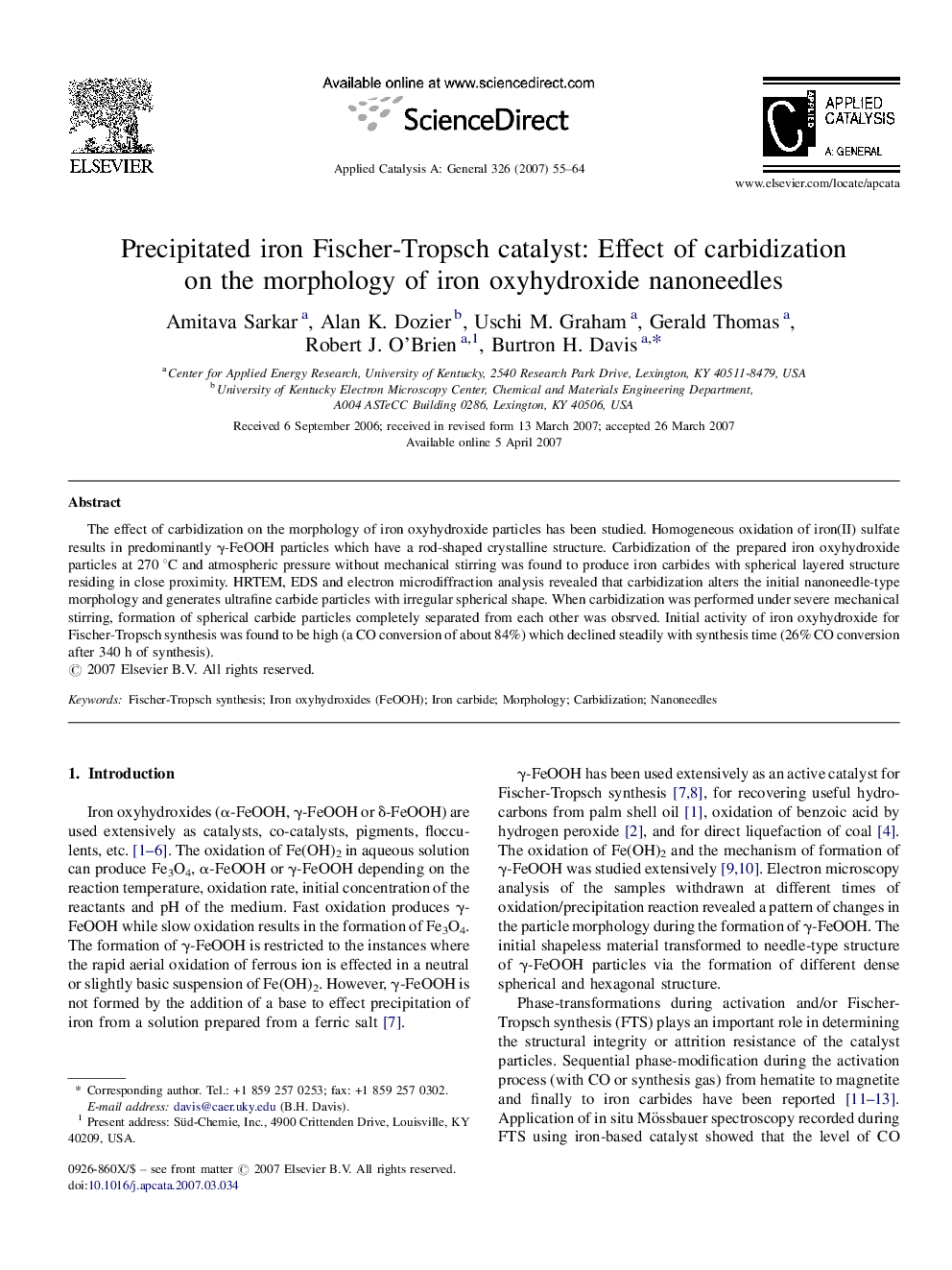| Article ID | Journal | Published Year | Pages | File Type |
|---|---|---|---|---|
| 44329 | Applied Catalysis A: General | 2007 | 10 Pages |
The effect of carbidization on the morphology of iron oxyhydroxide particles has been studied. Homogeneous oxidation of iron(II) sulfate results in predominantly γ-FeOOH particles which have a rod-shaped crystalline structure. Carbidization of the prepared iron oxyhydroxide particles at 270 °C and atmospheric pressure without mechanical stirring was found to produce iron carbides with spherical layered structure residing in close proximity. HRTEM, EDS and electron microdiffraction analysis revealed that carbidization alters the initial nanoneedle-type morphology and generates ultrafine carbide particles with irregular spherical shape. When carbidization was performed under severe mechanical stirring, formation of spherical carbide particles completely separated from each other was obsrved. Initial activity of iron oxyhydroxide for Fischer-Tropsch synthesis was found to be high (a CO conversion of about 84%) which declined steadily with synthesis time (26% CO conversion after 340 h of synthesis).
Graphical abstractThe effect of carbidation on the morphology of iron hydroxide oxide (γ-FeOOH) particles with a three dimensional crystalline nanoneedle structure has studied. Carbidation of γ-FeOOH with CO at atmospheric pressure produced iron carbides with spherical layered structure. HRTEM and EDS analysis revealed that carbidation changes the initial nanoneedles morphology and generates ultrafine carbide particles with irregular spherical shape. Figure optionsDownload full-size imageDownload as PowerPoint slide
